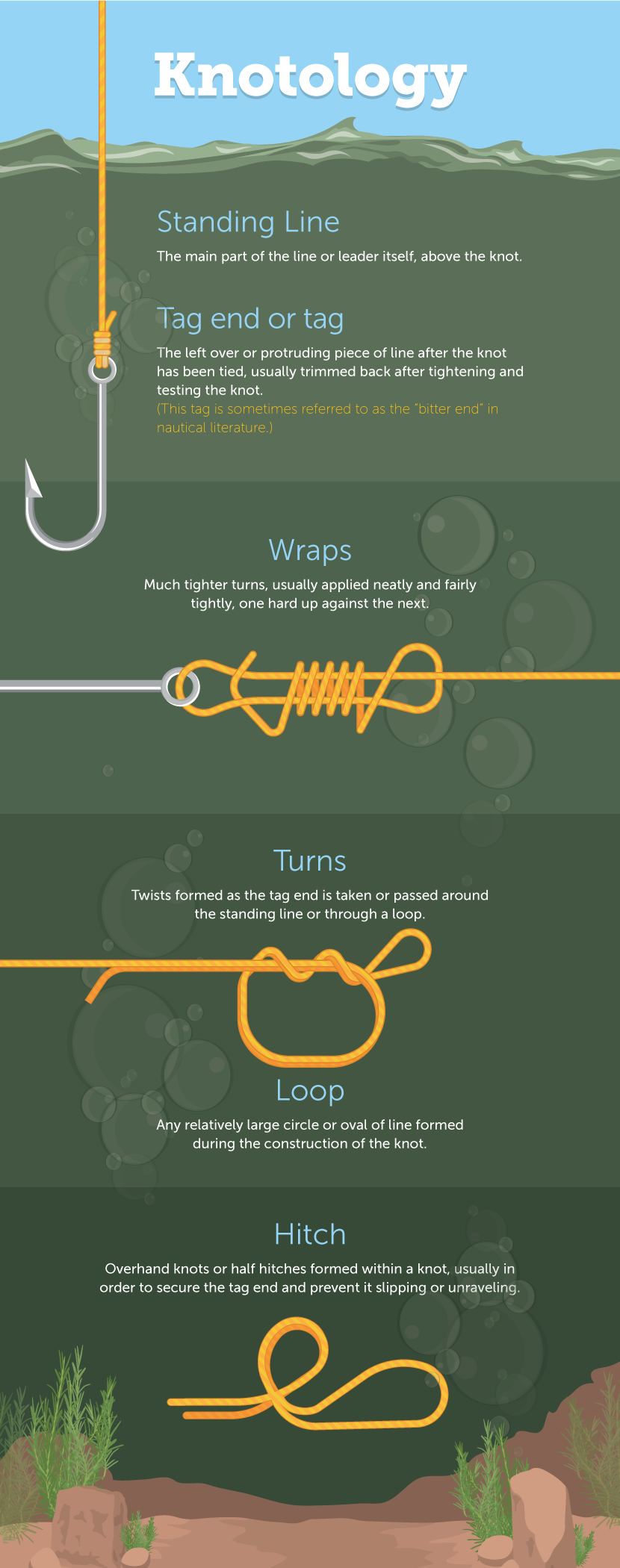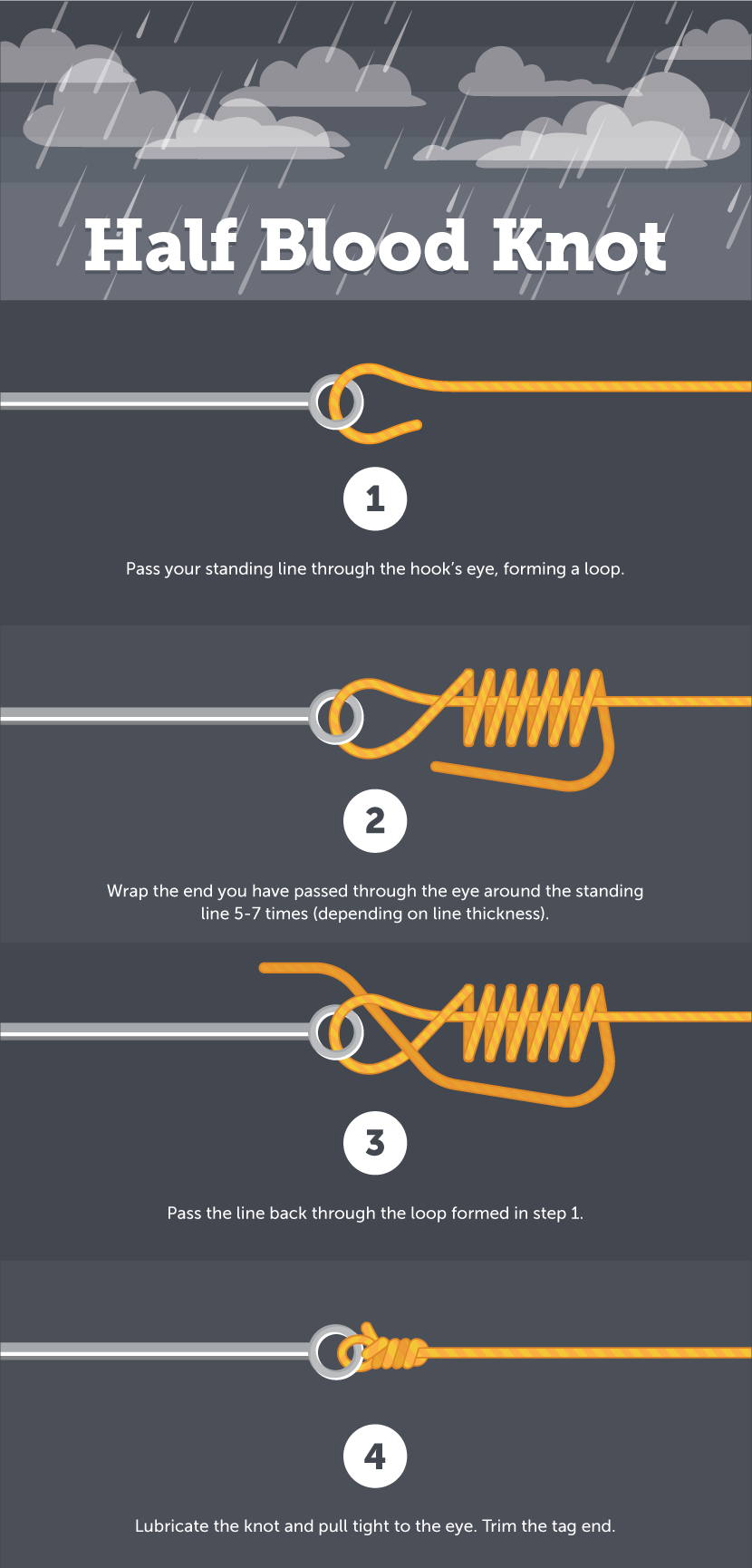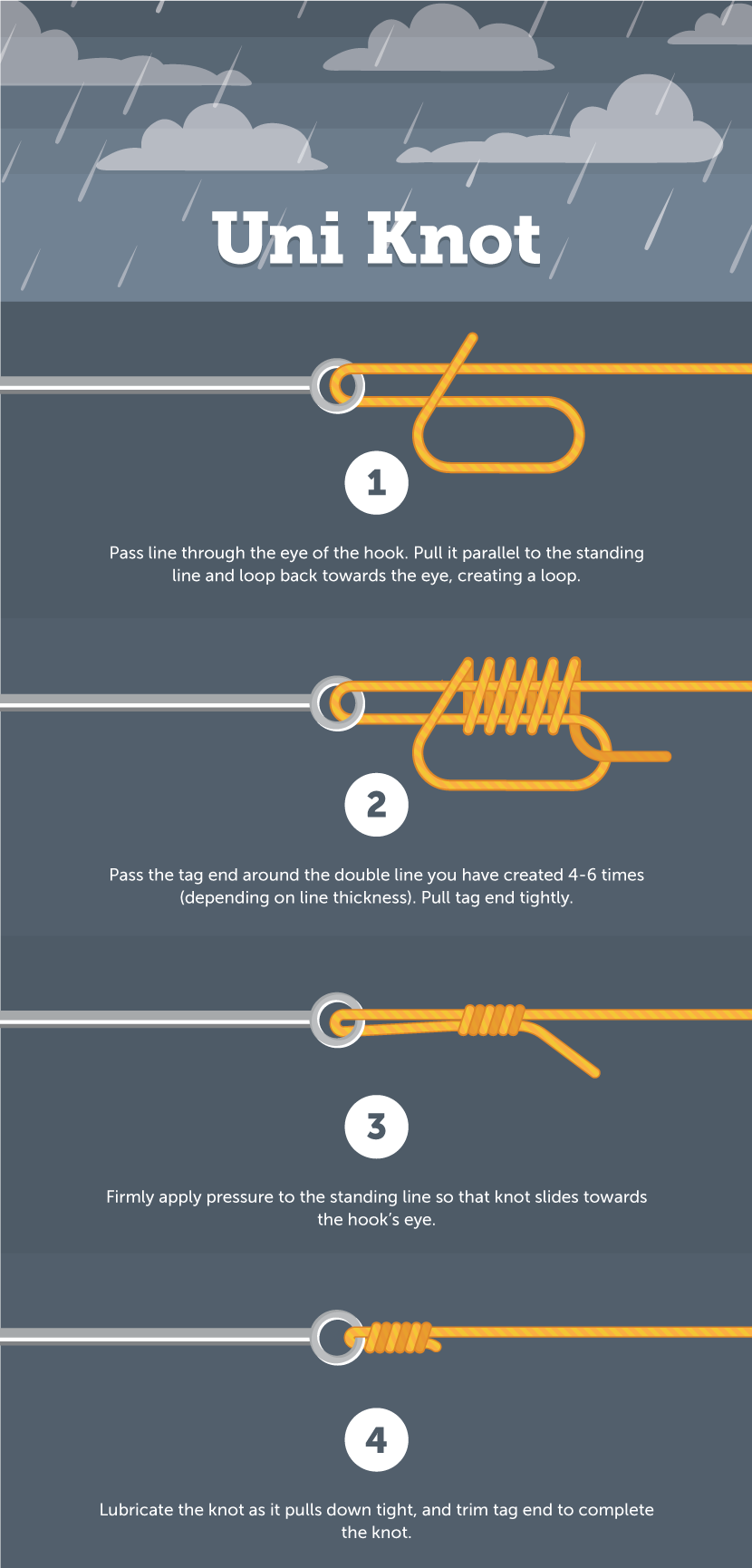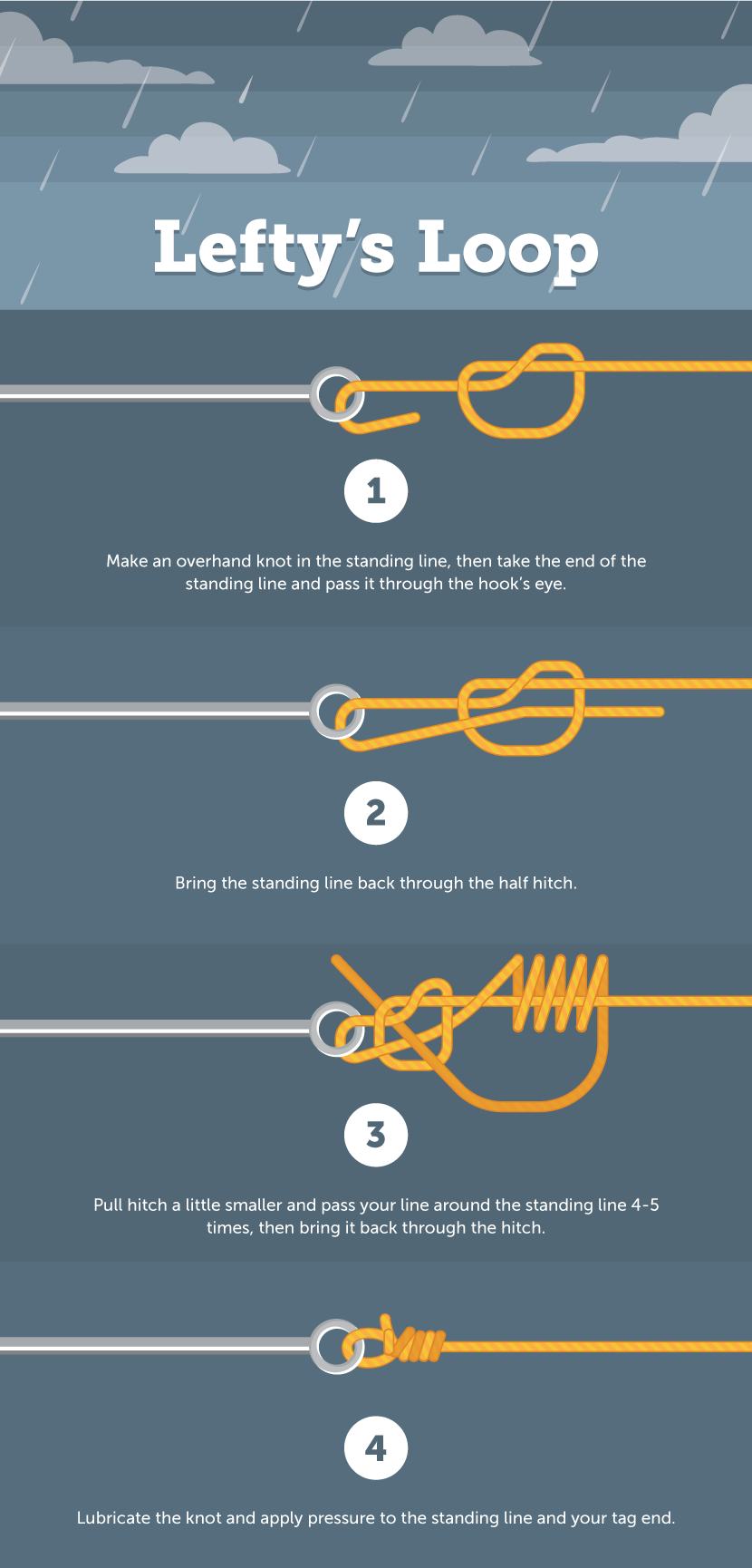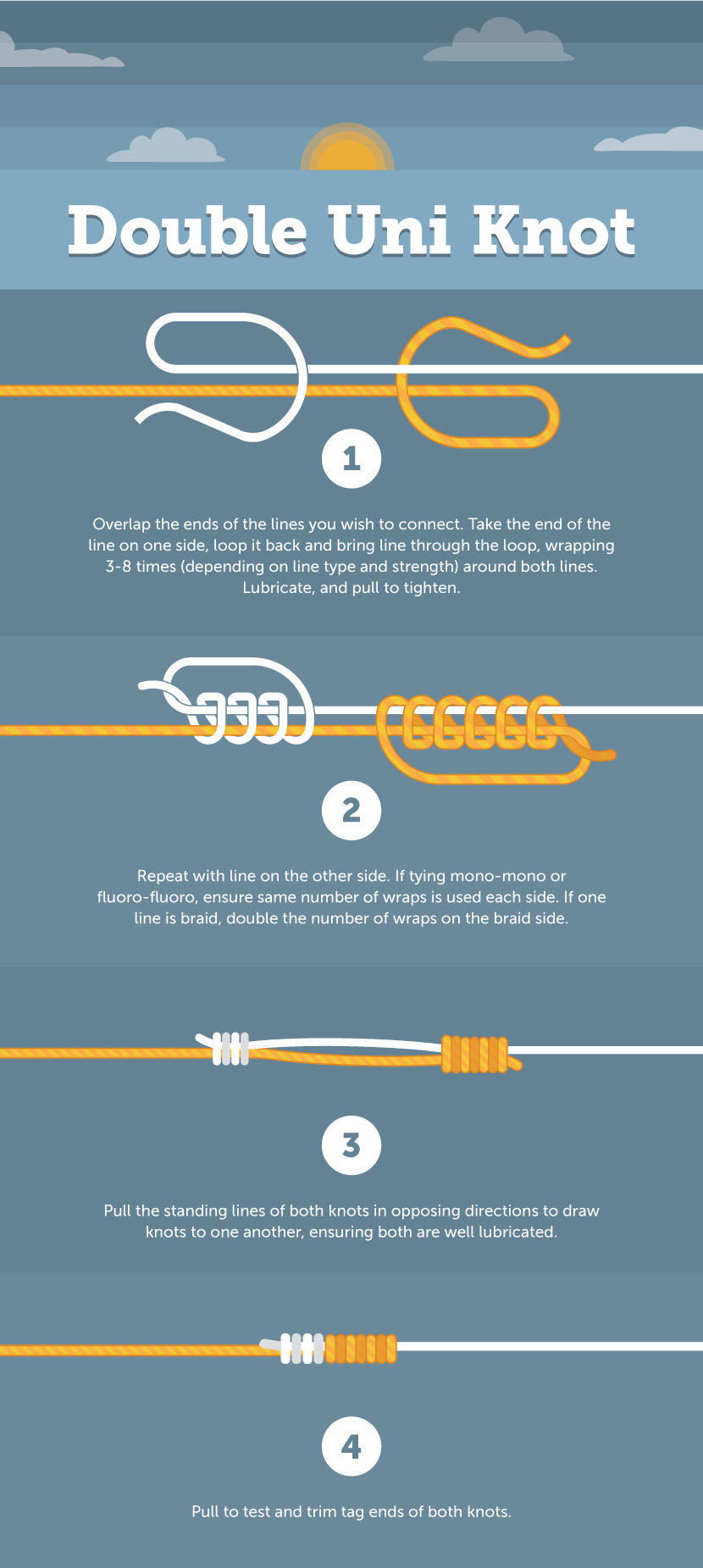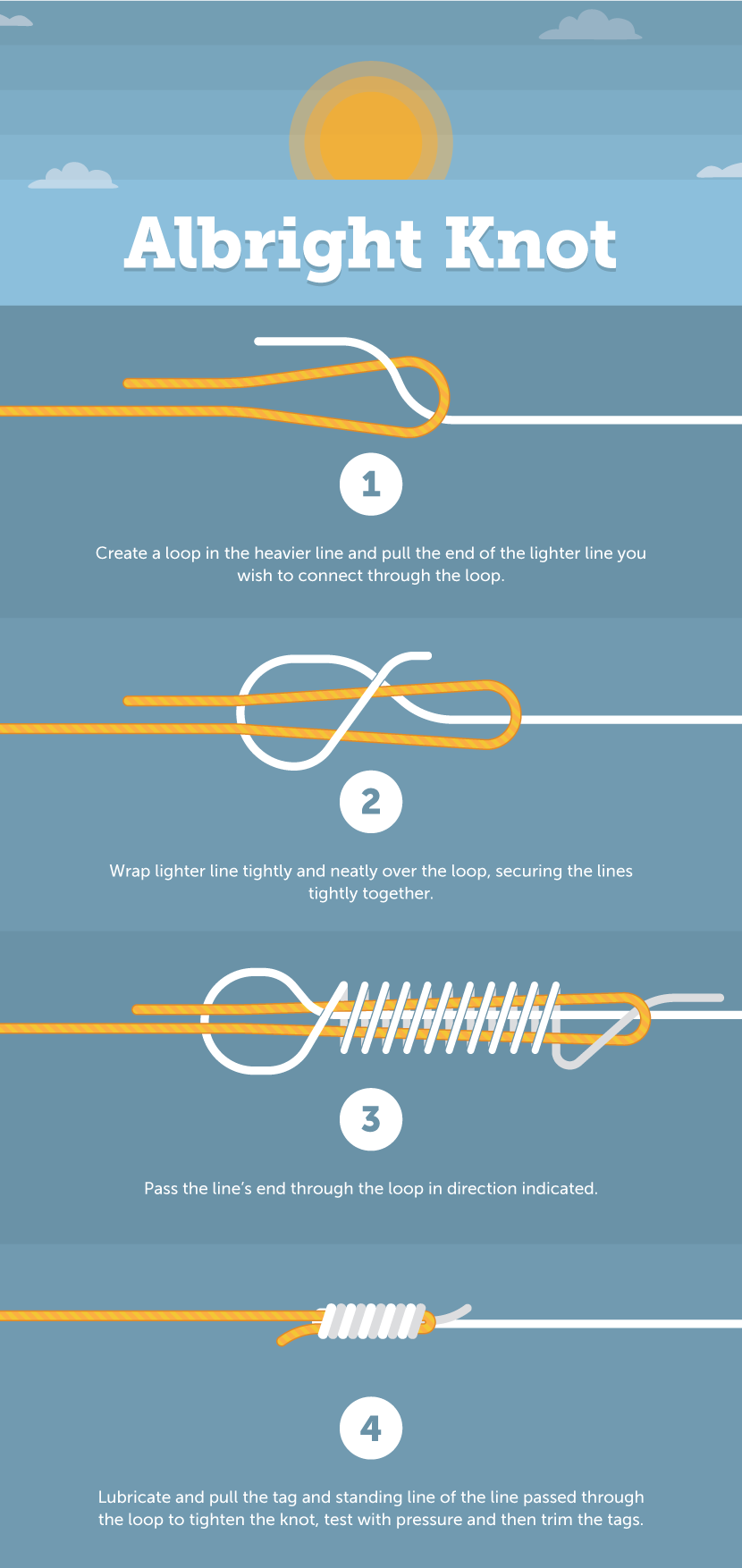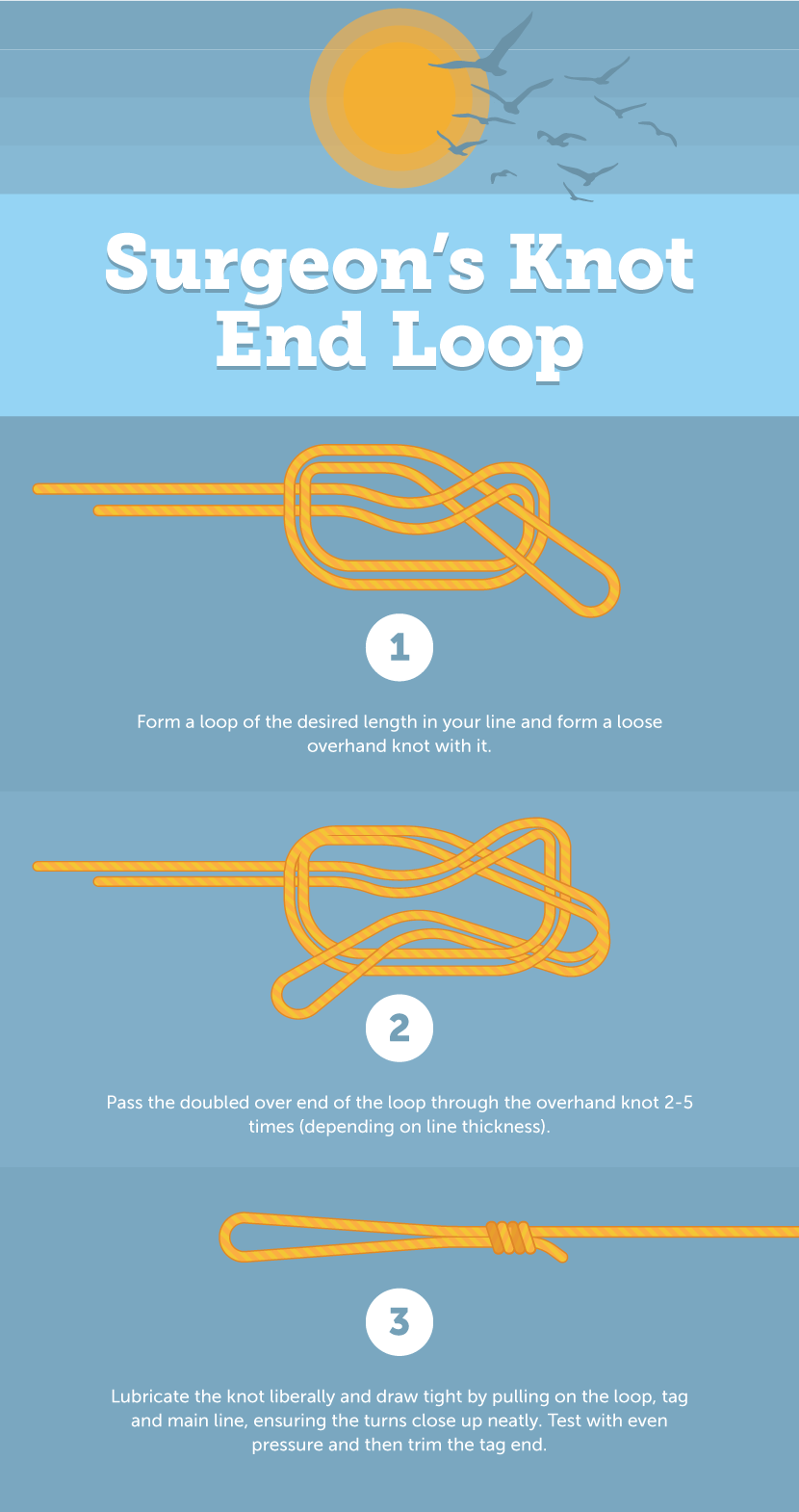Tying the Knot: Fishing’s Critical Connections
By: Steve Starling
The two most important keys to consistent fishing success are a sharp hook and a strong knot. Everything else is secondary… Everything!
These days, there’s no excuse for not using a sharp hook every time we cast a line. Hook technology has come a long way. Modern hooks are lighter, finer, stronger, and – most importantly – sharper straight from the pack than ever before. However, it’s still impossible to buy a packet of strong knots! Clever folks have done their best to come up with nifty devices intended to eliminate the need for knots by allowing the attachment of a clip or snap directly to the end of a line or leader via a series of wraps and twists. These things work, to varying degrees, but have never taken off. Many are a tad bulky, and there’s also that nagging doubt in the back of the user’s mind about their strength and reliability under practical fishing conditions. So most of us still need to tie knots in our day-to-day fishing… Sometimes lots of knots!
During an intensive fishing session, an angler might tie a dozen or more knots in just a few hours. Every one of these connections needs to be as strong as we can make it, maintaining the maximum integrity of our tackle and, we hope, avoiding the addition of another “one that got away” story to the endless list. Those knots may need to be tied as quickly as possible, in poor light, on a pitching boat, or in the wind, rain, or cold, often with hands still trembling uncontrollably after our latest adrenalin-charged fishy encounter.
Knot Failure
Sadly, knot failure is and will most likely remain the single greatest cause of lost fish.
Knots fail for two main reasons. First, they slip under load. Second, they’re poorly constructed in the first place, resulting in one strand of line effectively cutting across and through another.
Knot slippage takes two catastrophic forms. At its most extreme, the knot simply slips completely undone, with the tag end or tail sliding all the way back through the various turns and twists under pressure until the connection lets go. The telltale sign of total slip failure is a little curly “pig’s tail” or corkscrew at the end of the line where the hook, swivel, or lure was supposed to be. Come on… be honest. You’ve seen that accusatory little bedspring at the end of your own line, haven’t you? We all have. It makes you feel sick to your stomach… and it should!
The second, equally insidious, form of slip failure occurs when one or more turns of a knot slip just enough under load to momentarily create an intense friction point. In nylon and fluorocarbon monofilament lines, this friction hot spot can literally melt the outer skin of the line, causing immediate knot failure or – perhaps even more gut-wrenchingly – a serious weak spot that will let go later in the fight, most likely as you strain to bring that catch of a lifetime within range of the bank or landing net. It’s more difficult to identify the forensic evidence left by a friction slip, but if you look really closely (perhaps using a magnifying glass), you may actually be able to see the little melt spot and a partial curlicue shaped like a question mark at the end of the broken line.
Braided and fused gel-spun polyethylene (GSP) lines are much less prone to friction melting than monofilaments, but they are more susceptible to total slippage. If they begin to slip, knots tied in slick-skinned braid will often keep right on slipping away until they come undone, especially when they are lubricated with water. So a braid connection capable of resisting dry testing can sometimes let go underwater when subjected to severe loading. This is a trap for newcomers to these lines and helps explain some of the myths that have emerged about all sorts of “special” knots being required when using braided lines. In truth, you don’t need to tie “special” knots in braid… just good ones!
Bad Knots
Knots that cut themselves under load are essentially poor knots. The classic example is the single overhand or so-called “granny knot.” This is a passable hitch for tying ribbon on a Christmas present but not much use for anything else. (It’s worth noting, however, that the single overhand knot or “granny” does form the starting point of many fine loop knots.)
A granny knot will effectively halve the actual breaking strain of any material it’s tied in. In other words, form a granny knot in an otherwise undamaged length of 20-pound (10-kg) breaking strain line, and you’ve just turned it into 10-pound (5-kg) line under a steady load. It will likely break even more easily – perhaps with as little as four to six pounds (two or three kg) of force – if subjected to sudden, intense shock.
The weakness of a knot like the single overhand hitch lies in its internal structure and the fact that, within the knot, one strand crosses over another single strand at right angles. Under load, one of these strands becomes the knife and the other becomes the butter. The result is as inevitable as it is predictable… Ping!
Knot Anatomy
A good knot has sufficient turns or wraps to prevent slippage and to spread and absorb the strain. The very best connections work like miniature shock absorbers. Sound, reliable knots also steer clear of single, load-bearing strands crossing over each other at acute angles, especially at the part of the knot where load levels will peak under strain.
It’s interesting to watch a knot under load, especially through a magnifying lens. Even well-tied knots tend to slip or creep marginally, tightening, elongating, or otherwise changing shape under intense strain. The best and strongest connections are those that change appearance least under stress, as well as those where any deformation tends to take place away from the peak load-bearing region.
Good Knot-Tying Habits
There are a few simple habits worth developing when tying fishing knots. These will dramatically improve the strength of your knots and radically reduce the risk of knot failure.
The first and one of the most important of these tips (especially when tying knots in nylon or fluorocarbon monofilament lines or leaders) is to thoroughly lubricate every knot before pulling it really tight. You can use water, various oils, or a number of other lubricants for this purpose, but good old-fashioned spit or saliva is just as effective and always handy! Simply lick or spit on the turns of line as you draw the knot tight. This expedient greatly reduces the heat caused by friction as the knot tightens, saving the line from potential damage.
Second, always give yourself plenty of line to work with when tying any knot. Trying to tie a knot with a limited length of line or leader really cramps your style and can lead to skipping steps or scrimping on the number of wraps or turns, as well as ending up with a tag that’s too short and may slip into the knot during the vitally important tightening/testing phase.
Next, take time and care to tighten the knot with slow, steady pressure (after lubricating it, of course). Make sure all the turns and wraps snug down firmly and neatly. With some knots, it can pay to pull on the tag end as well as the standing (main) line, but the greatest pressure should always be applied to the main line rather than the tag.
Once the knot is snugged down firmly and has been fully tightened, give it a good test by really pulling on it. If a knot is going to fail, now is the time to find out, not when you’ve got a big fish on the line! When using lighter tackle with lines up to about 30-pound (15-kg) breaking strain, try to exert at least half as much pressure as the rated line strength when testing a knot. With heavier tackle, this can be trickier, but consider attaching the hook, lure, or snap to something solid and then pulling hard on it. Very few people do this, and that’s one reason so many fish are lost to knot failures. After this serious test, visually examine the knot again. Has it significantly changed shape? Has the tag end shortened noticeably? Is the line immediately above the knot damaged, crinkled, flattened, or otherwise deformed? If the answer to any of these questions is “yes,” cut the knot off and re-tie it!
Only after this testing process should you trim the tag end of the knot. Even then, leave a short tag of at least 1/8th inch (four mm) for safety.
Testing Knots
Every now and again (and especially when learning a new connection), it pays to test a knot to destruction. In other words, keep pulling until it breaks! Doing this teaches us a lot about the real strength (or weakness) of our knots. Destruction testing of different knots is an interesting and highly illuminating activity for a rainy afternoon.
There are a few other things you can do to improve the structural integrity and strength of almost any knot you tie. One that works with a variety of connections is to double the end or ends of the strands before beginning the knot-tying process, thus forming the knot with a doubled line. This process increases knot strength. Traditionally, this was one of the main reasons sport and game fishers created so-called doubles in the ends of their main lines, using knots such as the Bimini twist, plait, surgeons’ loop, or spider hitch (Cairns quickie).
The knots shown here are all used primarily for attaching terminal tackle items to the ends of lines or leaders. These items might be hooks, swivels, clips, lures, or whatever. The half blood and uni knots both form the basis of entire knot-tying “systems,” and most anglers eventually choose one or the other. There’s a good argument that the uni knot is marginally superior to the blood knot, but both work well when tied correctly. Loop knots are preferred when attaching lures and flies to heavier lines or leaders, as they enhance the action of these artificial baits.
Good knot tying is one of the most overlooked skills in the world of recreational fishing, yet it is also one of the most important. Spend some time learning how to do it exactly right and your catch rate will increase measurably… I guarantee it!
Half Blood Knot
Perhaps the most popular of all connecting knots and amongst the easiest to tie, the half blood can also let you down badly if executed poorly. The most common mistakes are an insufficient number of turns or twists, lack of lubrication while pulling the knot tight, tags cut too short, and insufficient tightening and testing. The number of turns or wraps needed varies with the thickness of the line. In light nylon or fluorocarbon monofilament under about a 15-pound (7-kg) breaking strain, always use at least five turns. This can be reduced to as few as three turns in very heavy monofilament with an over 80-pound (40-kg) breaking strain. When tying in braid (GSP or PE) lines, always use at least eight turns.
Uni Knot
This connection is sometimes referred to as the clinch knot, grinner, or hangman’s noose, although these names can also apply to slightly different connections. Marginally harder to tie really well than a half blood knot, this is also a slightly superior knot, much favored by expert anglers. Again, the number of turns or wraps needed varies with the diameter of the material being tied but should never be less than three or four, even in very thick monofilament. Use at least eight turns in GSP super lines (braids). As a bonus, the uni can also be used to form an excellent loop attachment in lighter lines or leaders by pulling firmly on the tag end to tighten the connection a few millimeters short of the eyelet.
Lefty’s Loop
Named after American fly-fishing legend Bernard “Lefty” Kreh, Lefty’s loop is a wonderful loop knot for attaching lures and flies to heavier leaders or lines without inhibiting their action. A relatively simple knot to tie, Lefty’s loop retains a reasonably high percentage of the leader’s un-knotted strength but is best used in lines with a breaking strain of at least 20 pounds (nine kg). The same or a very similar connection is also referred to as the Rapala knot in some literature.
Joining Knots
There are many times in fishing when it’s necessary to join one piece of line to another. These include re-joining your line after cutting out a tangle or removing a chafed section, joining new line to old line when topping up or “top-shotting” a reel, and for connecting a leader to a main line. Here are two excellent connections for these purposes, each with slightly different applications.
Double Uni Knot
The double uni knot is most experts’ preferred connection when joining two lines of roughly similar strength and diameter (ideally, there should no more than a 50 or 60 percent variation in thickness between the two strands). This makes it ideal for reconnecting the ends of lines after cutting out a tangle or damaged section, joining new line to backing for a top-shot, or adding lighter mono leaders under a 30-pound (15-kg) breaking strain to braided main lines of a roughly similar rated strength. It’s also perfect for constructing your own tapered fly fishing leaders. In addition, by leaving one tag end long, you can readily attach dropper hooks and flies.
Albright Knot
Named after the legendary Florida fishing guide Jimmy Albright, who’s credited with its creation, the Albright is one of those connections that many folks enjoy a love/hate relationship with! It’s probably fair to say that poorly executed Albrights have cost more big fish over the years than just about any other line-to-leader connection. However, when tied well, this is a neat, streamlined, and very strong way of joining relatively heavy leaders, those with over a 30-pound (15-kg) breaking strain, to main lines.
Dropper Loop Knot
Sometimes it’s useful to form a loop in the end of your line to attach sinkers or other terminal tackle items. One arm of the finished loop can also be cut to any desired length to form a single-strand dropper. The surgeon’s loop described here is arguably the simplest of all dropper or loop knots and is reasonably strong if tied correctly.
Surgeon’s Knot Loop
Named in reference to its widespread use in surgery for tying off sutures and stitches, the surgeon’s loop is fast and easy to tie and retains a reasonably high percentage of the line’s unknotted strength. The dropper loop produced can also be made to any length required and can be cut to form two single strands. Vary the number of turns in this knot depending on the strength of the line (more in light line, fewer in heavier materials), and be sure to lubricate liberally with saliva before drawing the knot tight.
This article should give you some insight into the importance of a well-tied knot and a rundown of the most popular and successful knots that have kept anglers connected to big fish over the years (when tied correctly). The list of knots and variations that anglers prefer could (and has been) the subject of entire books, but this article should provide you with everything you need to get started on a better knot-tying career.
